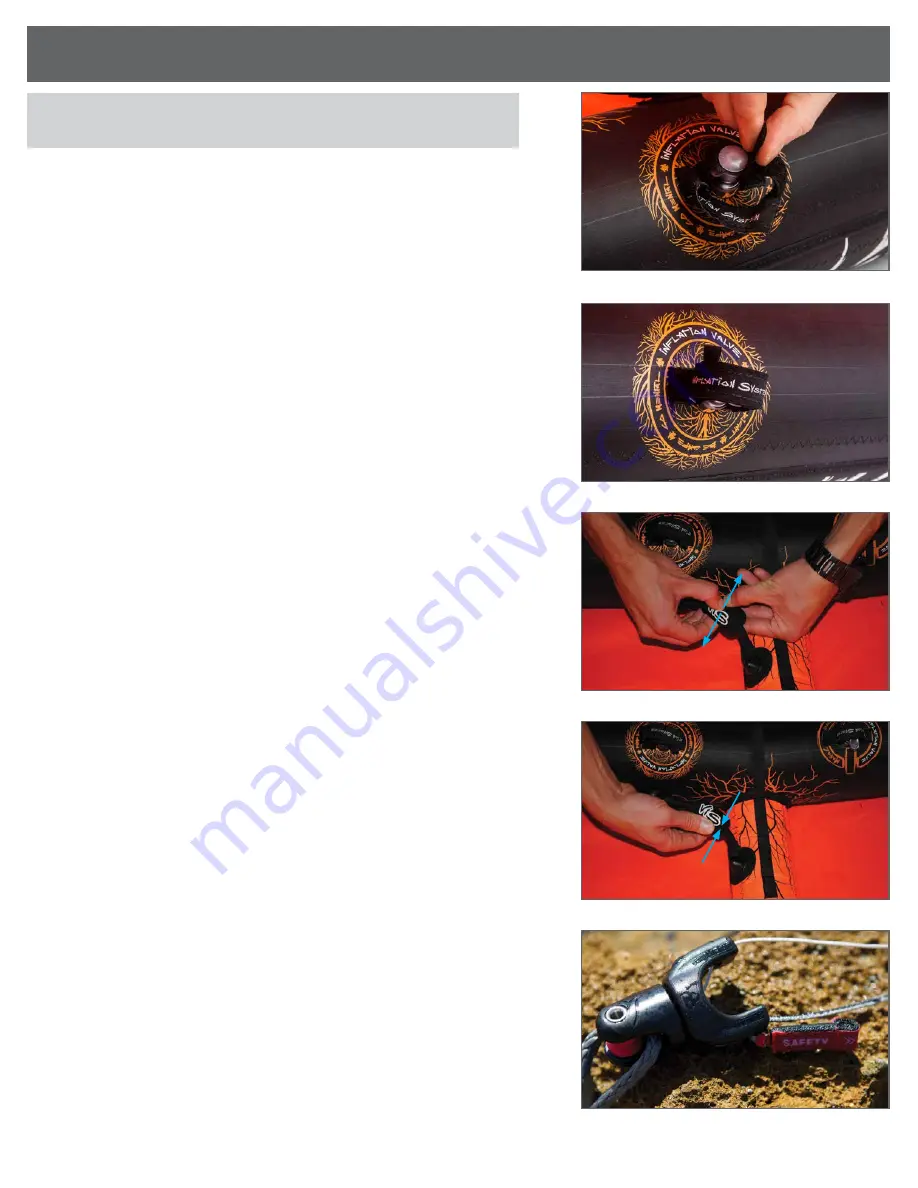
TIPs & INFO
1.
Always make sure your swivel and pulley moves freely and is not
jammed when setting up your kite (before every session).
2.
You should frequently check your flying lines to ensure that all
4 lines are equal in length when the bar is trimmed at full power
(release depower rope out of clam cleat). Lines will stretch over time.
Check with your local shop on line stretching/adjusting techniques.
3.
You should frequently inspect your kite canopy for small holes
and the seams for fraying. It is a good habit to inspect while you are
pumping your kite.
4.
Make sure your lines are free of knots and damage when setting up
and/or de-rigging your lines.
5.
When closing the deflation valve on LE, remember to make sure it is
shut and seal it tightly with velcro (figure 1-2).
6.
Use the Magic velcro to lock in dangling depower rope.
7.
Remember to trim your kite with your depower rope/clam cleat for
optimal performance. Failure to do so may result in the kite over or
under sheeting. Check with your local shop or instructor on trimming
techniques.
8 A.
The 6.5m and 8m uses Small bar (41.5cm shaft) - 21m (19m+2m)
line set + additional 2m extension = total 23m.
8 B.
The 9.5m uses Medium bar (45cm shaft) - 23m (21m+2m) line set
+additional 2m extension = total 25m.
8 C.
The 11.5m & 14m uses Large bar (48cm shaft) - 25m (23+2m) line
set + additional 2m extension = total 27m.
9.
Always make sure the clamps on the vIS is open when pumping or
deflating the kite (Figure 3).
10.
Always make sure the clamps are closed on the vIS system after
inflating the kite (Figure 4).
11.
Secure your kite on the beach at all times (using sand, compression
bag filled with sand etc.).
12.
Pump kite “right”, but use caution and do not over inflate.
13.
Always rinse the swivel after every session to ensure that it spins
freely (figure 5).
14.
Make sure you inspect your flying lines just as it is written on the
swivel – the lines go through it therefore they are under a bigger threat
of breaking if the system is activated very often. This is the regular wear
& tear and so it is up to rider to control that before every session and
replace if needed.
www.wainmanhawaii.com - 25
REMEMbER:
Safety is the number one priority.
Figure 1.
Figure 2.
Figure 3
Figure 4.
Figure 5.


































